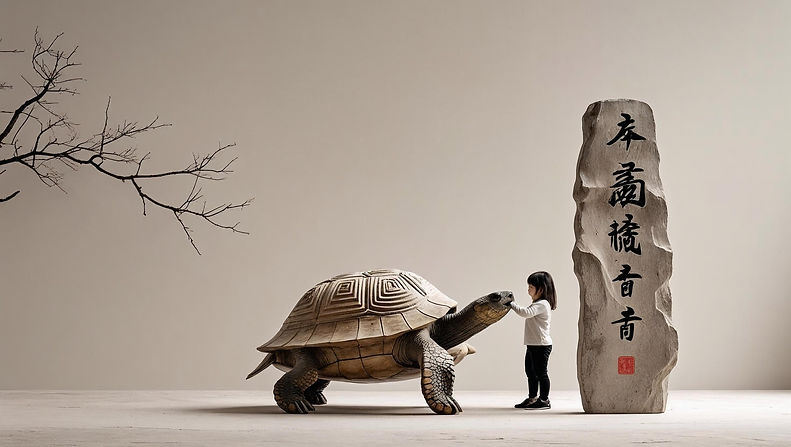
Epigraph: "The sublime order is a bridge to the fragrant green of youth."
T'ai Hsüan Ching: The origins of an ancient Chinese philosophy
Discover the fascinating history behind "The Young I Ching" – a system deeply rooted in ancient Chinese philosophy that continues to offer valuable insights today.
Yang Hsiung and the Revival of the I Ching
First, the history of the T'ai Hsüan Ching: Around 53 BC, the Chinese scholar Yang Hsiung (also Yang Xiong) lived. Yang Hsiung's biography reveals that he highly valued the I Ching (or I Ching, Chou I, Changes), a Chinese classic dated to approximately 800 BC. However, this ancient Chinese wisdom he I Ching was in danger of being forgotten.
Yang Hsiung wanted to breathe new life into this wisdom. Therefore, he created his own work: the T'ai Hsüan Ching (The Mystery).The T'ai Hsüan Ching was developed by Yang Hsiung as a companion to the I Ching. It was not intended as a rival, but as a partner to strengthen the significance of the I Ching. Here is an explanation of the T'ai Hsüan Ching.
I Ching vs. T'ai Hsüan Ching from Yang Hsiung: A Comparison of Structures
Michael Nylan describes in her book “The Elemental Changes” - The T'ai Hsüan Ching of Master Yang Hsiung, the fundamental differences between the I Ching and the T'ai Hsüan Ching, as well as the similarities between these two systems:
- I Ching (Changes):
o Consists of 64 texts, each assigned a hexagram.
o Hexagrams are composed of six lines, which can be either unbroken (Yang) or broken (Yin).
o Each hexagram has six corresponding line texts.
- T'ai Hsüan Ching (Mystery):
o Replaces the hexagram with a four-line tetragram.
o Lines are read from top to bottom (opposite to the I Ching).
o Instead of just two (Yin/Yang), there are three possibilities for each line of the diagram:
- An unbroken line (correlated with Heaven).
- A once-broken line (representing Earth).
- A twice-broken line (symbolizing humanity, situated between Heaven and Earth).
Mathematical Beauty: The 81 Tetragrams
IThe T'ai Hsüan Ching is not only philosophical but also mathematically fascinating:
- The four lines of the T'ai Hsüan Ching, each with three possibilities, result in 3x3x3x3 = 81 Tetragrams (compared to 64 hexagrams in the I Ching).
- Each tetragram is then appended with 9 evaluations, resulting in a total of 729 evaluations.
A link to a detailed description of the mathematics of the T'ai Hsüan Ching is provided at the bottom of this page.
Your Answer: A Guide to Deeper Understanding
When you consult "The Young I Ching", you receive two numbers in addition to these evaluations: that of the tetragram and that of the evaluation. With these, you can read the detailed version in Michael Nylan's correct translation. Remember that the evaluations are read from top to bottom.
Furthermore, we have included the original texts in Chinese characters on the answer pages. The title of the tetragram (always the first character) and the three-part main text are at the very top, and the relevant one of the nine possible evaluations is found at the very bottom.
A Crucial Difference: Logic Over Mystery
A key difference between these two principally similar systems is the philosophy of arrangement of the hexagrams and tetragrams.
- The T'ai Hsüan Ching follows an elegant, strictly mathematical logic,
thereby supporting a coherent philosophy.
- In contrast, no plausible explanation for the arrangement of the I Ching has yet been found.
Derek Walter's The Alternative I Ching (1987) thematizes the mathematical beauty inherent in the T'ai Hsüan Ching. For those who want to know more, "Mathematics of the Tai Xuan Jing" by Frank "Tony" Smith is recommended (available online at: https://vixra.org/pdf/1412.0175v1.pdf).